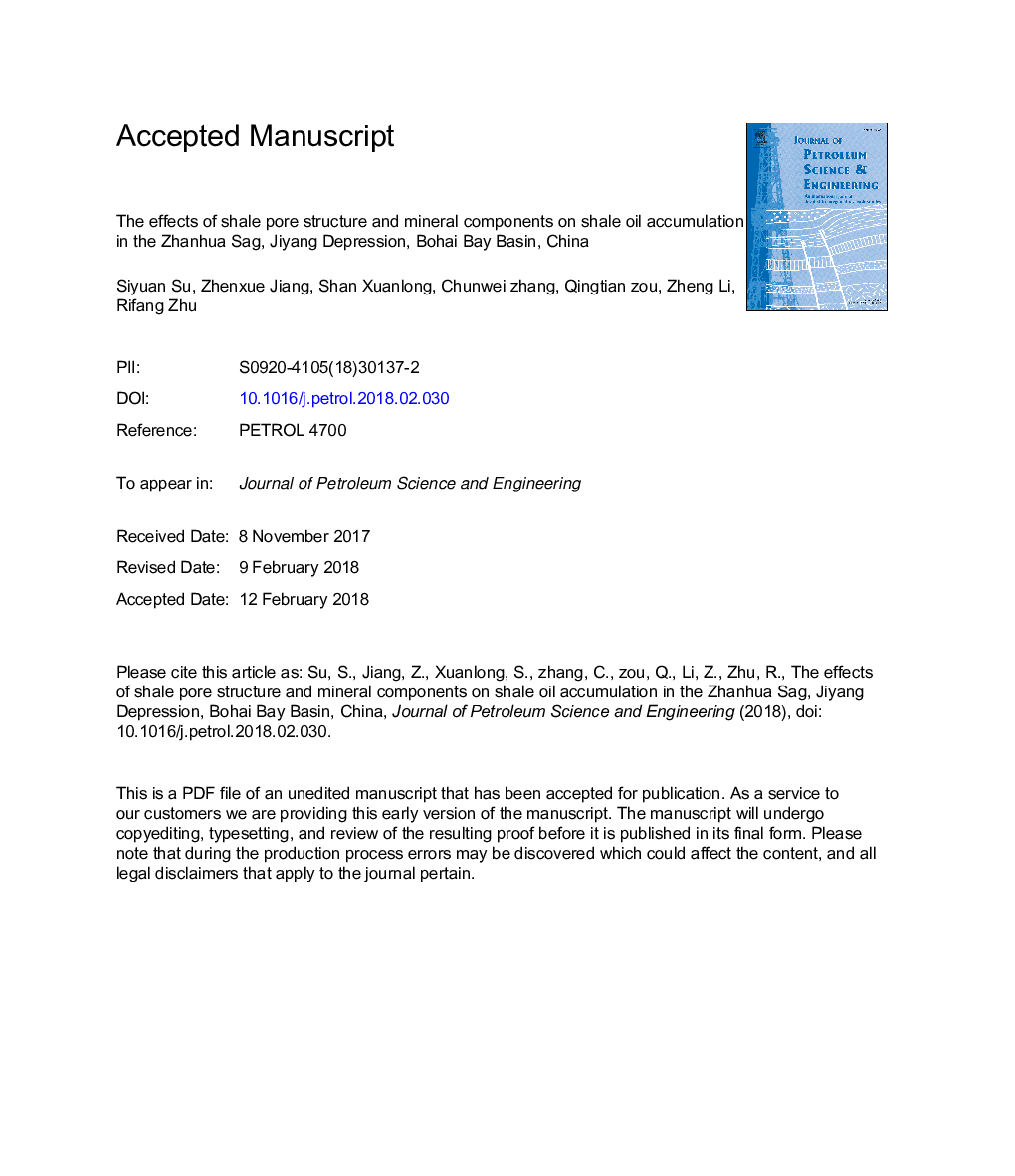| کد مقاله | کد نشریه | سال انتشار | مقاله انگلیسی | نسخه تمام متن |
|---|---|---|---|---|
| 8125051 | 1522776 | 2018 | 60 صفحه PDF | دانلود رایگان |
عنوان انگلیسی مقاله ISI
The effects of shale pore structure and mineral components on shale oil accumulation in the Zhanhua Sag, Jiyang Depression, Bohai Bay Basin, China
ترجمه فارسی عنوان
اثرات ساختار منفی شیل و اجزای معدنی بر تجمع نفت شیل در زونوهوا ساگ، افسردگی جیانگ، حوضه خلیج بوهی، چین
دانلود مقاله + سفارش ترجمه
دانلود مقاله ISI انگلیسی
رایگان برای ایرانیان
موضوعات مرتبط
مهندسی و علوم پایه
علوم زمین و سیارات
زمین شناسی اقتصادی
چکیده انگلیسی
The pore structure and mineral components of shale have different effects on the enrichment of different phases of shale oil. Thus, research on the relationships between shale's pore structure and mineral components and shale oil enrichment is particularly important. Using core observations, scanning electron microscopy, whole rock mineral diffraction analysis, CO2 and N2 low-temperature and -pressure adsorption experiments and nuclear magnetic resonance experiments, this study analyzed the effects of the pore structure characteristics and mineral components of shale on shale oil accumulation in the lower segment of the third member of the Shahejie Formation in the Zhanhua Sag, Jiyang Depression, Bohai Bay Basin, China. This shale segment primarily contains inorganic pores and fractures. The inorganic pores include intergranular, intragranular, intercrystalline and dissolution pores. Structural microfractures and bedding fractures are the main types of fractures in the connected network of the shale rocks. Organic pores are not fully developed in the segment, and a few organic materials with inter-bedded clay minerals form the intergranular and dissolution pores with calcite. The pore structures in the study area are very complex. Micropores, mesopores and macropores are all present, and micropores account for 19% of the pores, mesopores account for 31%, and macropores account for 50%. We compared the results of CO2 and N2 adsorption experiments performed before and after chloroform extraction of shale samples and found that adsorbed-phase shale oil is primarily stored in micropores, which have diameters less than 2â¯nm, whereas free-phase shale oil is stored in mesopores, macropores and microfractures, which all have diameters greater than 2â¯nm. The carbonate content ranges from 46% to 88% and primarily comprises calcite, which favors the formation of intergranular and dissolution pores. The pyrite content is positively correlated with the pore volume, which is conducive to the development of pores. However, the clay content is negatively correlated with the pore volume, which is not conducive to the development of larger pores or the enrichment of movable shale oil.
ناشر
Database: Elsevier - ScienceDirect (ساینس دایرکت)
Journal: Journal of Petroleum Science and Engineering - Volume 165, June 2018, Pages 365-374
Journal: Journal of Petroleum Science and Engineering - Volume 165, June 2018, Pages 365-374
نویسندگان
Siyuan Su, Zhenxue Jiang, Shan Xuanlong, Chunwei zhang, Qingtian zou, Zheng Li, Rifang Zhu,
